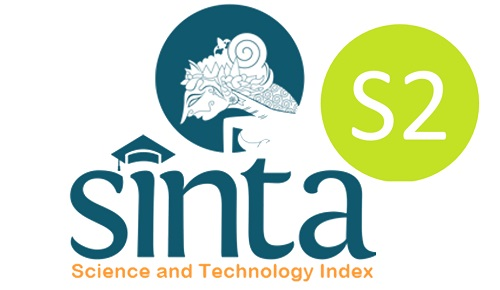ETHICS AND VALUES EDUCATION THROUGH ANTHROPOMORPHISM IN EAST NUSA TENGGARA FOLKTALES
DOI:
https://doi.org/10.22373/ej.v5i2.2961Keywords:
anthropomorphism, folktales, local content, ethics and values educationAbstract
This study describes anthropomorphism that contains ethics and values education within East Nusa Tenggara folktales in Indonesia. The study explored the data on anthropomorphism based on the students’ textbooks of the local content subject, “Pengetahuan Lingkungan dan Sosial Budaya Daerah Nusa Tenggara Timur Sekolah Dasar Kelas 2†and“Cerita Rakyat Nusa Tenggara Timur Sekolah Dasar Kelas 6â€. The textbooks containing the folktales were published in 2012 by CV Jala Makmur – Kupang. There were 20 folktales in the textbooks, but the anthropomorphisms investigated were only within four folktales, in which the animals behaving like human beings. The study was library research based, using a descriptive qualitative method. The study applied a moral approach since the value of anthropomorphism is to educate the readers. The results of this study showed that there were eight values to learn in Hoga Woe, three in Nenek Bupu Repu, five in Asu Nok Maleobibi, and five in Dhone dan Kaju. This study concludes that folktales can be one of the teaching and learning materials for introducing morals, attitudes, and good judgments to the young students in ethics and values education. In addition, folktales can be developed into plays, from which the students can play the characters in order to easily absorb moral education in a fun and interesting way.Downloads
References
Babalola, E. T. & Onanuga, P. A. (2012). Antrophization of minority languages: Indigenous folktales to the rescue. International Journal of Linguistics, 4(1), 158-173.
Bressler, C. E. (1994). Literary Criticism: An Introduction to Theory and Practice. New Jersey: Prentice Hall.
Burke, C. & Copenhaver, J. (2004). Animals as people in children‘s literature. Language Arts, 81(3), 205 – 213.
Cigay, D. T. (2009). Preserving our folktales, myths, and legends in the digital era. Storytelling, Self, Society, 6(1), 19-38.
Ćurko, B., Feiner, F., Gerjolj, S., Juhant, J., Kreβ, K., Mazzoni, V., Mortari, L., Pokorny, S.,
Schlenk, E., and Strahovnik, V. (2015). Ethics and Values Education-Manual for Teachers and Educators. European Commission.
Dunn, E. A. (2011). Talking Animals: A Literature Review of Anthropomorphism in Children’s Book. [Master’s thesis]. North Carolina
Probst, R.E & Beers, K. (2003). Elements of Literature: First Course. Austin,TX: Holt/McDougal.
Jardim, T.J. (2013). Animals as Character: Anthropomorphism as Personality in Animation. [Master’s thesis], University of the Witwatersrand, Johannesburg.
Kirmani, M. H. & Frieman, B. B. (1997). Diversity in classroom: Teaching kindness through folktales. International Journal of Early Childhood, Retrieved on March 15, 2018 from https://doi.org/10.1007/BF03174485
Kollias, O. (2015). Anthropomorphism, Aesop’s fables, and their use in lifelong learning and vocational training by awakening participants’ memes. Journal of Higher Education Theory and Practice, 15(2), 96-103.
Markowsky, J. K. (1975). Why anthropomorphism in children’s literature? Elementary English, 52(4), 460-466.
Nhung, Pham Thi Hong. (2016). Folktales as a valuable rich cultural and linguistic resource to teach a foreign language to young learners. International Journal of Education, Culture and Society, 1(1), 23-28. DOI: 10.11648/j.ijecs.20160101.15.
Nurgiyantoro, B. (2005). Sastra Anak, Pengantar Pemahaman Dunia Anak [Children’s Literature, An Introduction to Children’s Understanding]. Yogyakarta: Gadjah Mada University Press.
Otta, G. M.N. (2014). Bahan Ajar Mata Kuliah Prose [Prose Course’s Modul]. Kupang: Universitas Nusa Cendana.
Rahim, H. & Rahiem, M. D. H. (2012). The use of stories as moral education for young children. International Journal of Social Science and Humanity, 2(6), 454-458.
Sehandi, Y. (2012). Mengenal Sastra dan Sastrawan NTT [Recognizing the Literature and the Litterateurs of East Nusa Tenggara]. Yogyakarta: Universitas Sanata Dharma.
Sutherland, Z & Arbuthnot, M. H. (1977). Children and Books (5th Ed.). Glenview, Illinois: Scott, Foresman and Co.
Weaver, C. (1994). Reading Process and Practices: From Socio- Psycholinguistics to Whole Language. Portsmouth: Heinemann.
Textbooks
Pengetahuan Lingkungan dan Sosial Budaya Daerah Nusa Tenggara Timur Sekolah Dasar
Kelas 2 [Environmental and Socio-Cultural Knowledge of East Nusa Tenggara Region fo Elementary School Grade 2]. (2012). Kupang: CV Jala Makmur.
Cerita Rakyat Nusa Tenggara Timur Sekolah Dasar Kelas 6 [Folktales of East Nusa Tenggara for Elementary School Grade 6]. (2012). Kupang: CV Jala Makmur.
Downloads
Published
Issue
Section
License
Proposed Policy for Journals That Offer Open Access
Authors who publish with Englisia journal agree to the following terms:
- Authors retain copyright and grant the journal right of first publication with the work simultaneously licensed under a Creative Commons Attribution License that allows others to share the work with an acknowledgement of the work's authorship and initial publication in this journal.
- Authors are able to enter into separate, additional contractual arrangements for the non-exclusive distribution of the journal's published version of the work (e.g., post it to an institutional repository or publish it in a book), with an acknowledgement of its initial publication in this journal.
- Authors are permitted and encouraged to post their work online (e.g., in institutional repositories or on their website) prior to and during the submission process, as it can lead to productive exchanges, as well as earlier and greater citation of published work (See The Effect of Open Access).









